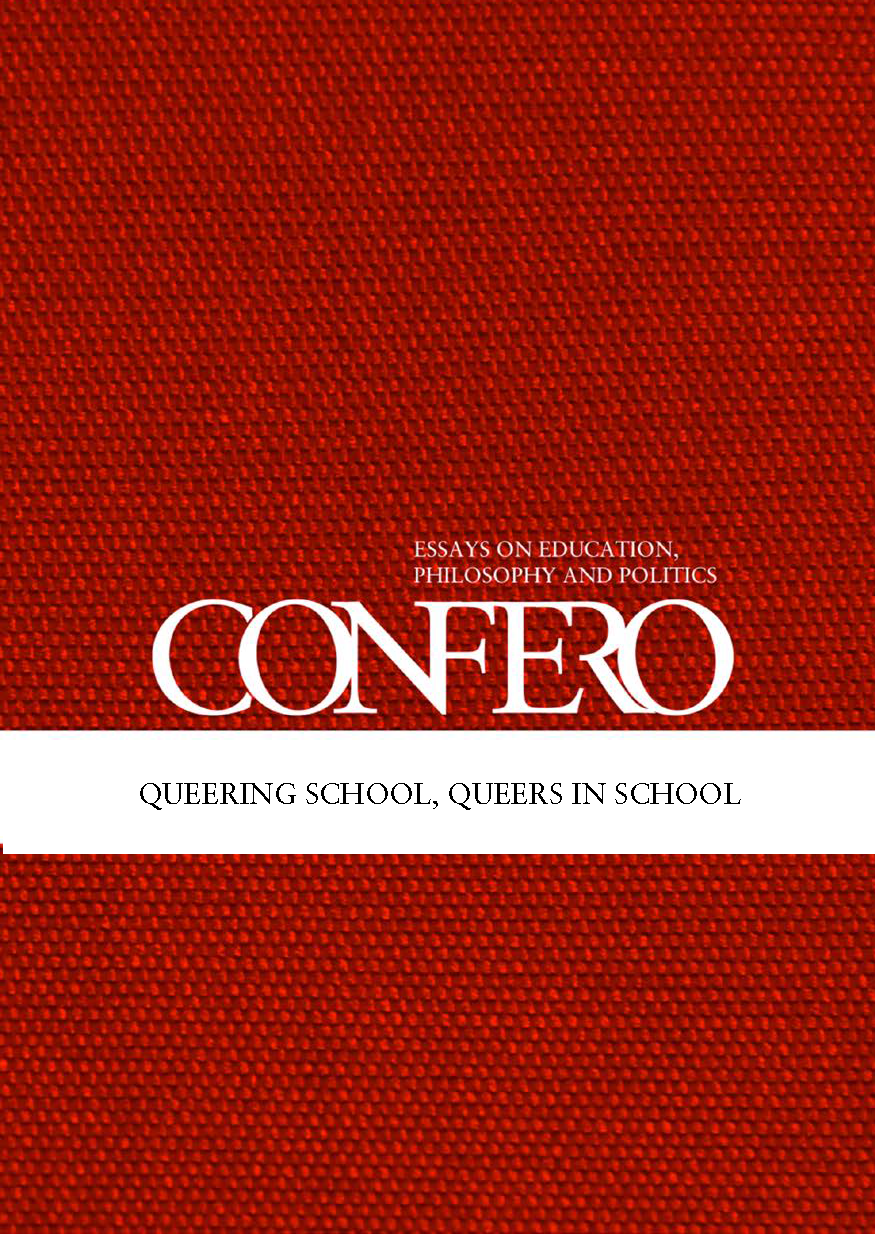Queer spawn on school
DOI:
https://doi.org/10.3384/confero.2001-4562.13v1i21eAbstract
This article is about the school experiences of young people with LGBTQ parents. Based on 31 interviews with youth, ages 10 – 18, the article attempts to summarize what these young people had to say about the challenges they encounter in school, and the strategies they adopt in the face of them.
References
Baker, Jean. How Homophobia Hurts Children: Nurturing Diversity at Home, at School and in the Community. New York: Harrington Park Press, 2002.
Canfield-Lenfest, Monica. Kids of Trans Resource Guide. San Fransisco. COLAGE (People with a lesbian gay bisexual ransgender or queer parent). www.colage.org, 2008.
D’Augelli, Anthony. Consequences of lesbian, gay and bisexual youth victimization in schools. Symposium presented t the 107th Annual Convention of the American Psychological Association, Boston, Massachusetts, 1999.
Garner, Abigail. Families like mine: Children of gay parents tell it like it is. New York, NY: Harper Collins, 2004.
Goodenow, Carol and Tim Hack. Risks facing gay, lesbian, and bisexual high school adolescents: The Massachusetts Youth Risk Behavior Survey. Paper presented at the 106th Annual Convention of the American Psychological Association, San Fransisco, California, 1998.
Gustavson, Malena, and Irina Schmitt. Culturally queer, silenced in school? http://lup.lub.lu.se/luur/download?func=downloadFile&recordOId=1786362&fileOId=3157922, Retrieved, 2011.
Israel, Barbara, Amy Schulz, Edith Parker and Adam Becker. “Review of Community-Based Research: Assessing partnership approaches to improve public health.” Annual Review of Public Health 19 (1998): 173-202. doi: 10.1146/annurev.publhealth.19.1.173 PMid:9611617
Kuvalanka, Katherine, and Abbie Goldberg. “‘Second generation’ voices: Queer youth with lesbian/bisexual mothers.” Journal of Youth and Adolescence 38.7 (2008): 904-919. doi: 10.1007/s10964-008-9327-2 PMid:19636735
Renold, Emma. “Presumed Innocence: (Hetero)sexual, heterosexist an homophobic harassment among primary school girls and boys.” Childhood 9.4 (2002):415-434. doi: 10.1177/0907568202009004004
Russell, Stephen, Hinda Seif, and Nhan Truong (2001) “School outcomes of sexual minority youth in the United States: evidence from a national study.” Journal of Adolescence 24.1 (2001):111-127. doi: 10.1006/jado.2000.0365 PMid:11259074
Ryan, Caitlin. “‘How Do You Spell Family?’: Literacy, Heteronormativity, and Young Children of Lesbian Mothers.” Dissertation, Doctor of Philosophy, Education: Teaching and Learning, The Ohio State University, 2010.
Savin-Williams, Ritch. “Verbal and physical abuse as stressor in the lives of lesbian, gay male, and bisexual youths: Associations with school problems, running away, substance abuse, prostitution and suicide.” Journal of Consulting and Clinical Psychology 62.2 (1994):261-269. doi: 10.1037/0022-006X.62.2.261 PMid:8201062
Taylor, Catherine and Tracey Peter with TL McMinn, Tara Elliot, Stacey Beldom, Allison Ferry, Zoe Gross, Sarah Paquin, and Kevin Schacter. Every class in every school: The first national climate survey on homophobia, biphobia, and transphobia in Canadian schools. Final report. Toronto, Ontario: Egale Canada Human Rights Trust, 2011.
Thurlow, Crispin. “Naming the ‘outsider within’: homophobic pejoratives and the verbal abuse of lesbian, gay and bisexual high-school pupils.” Journal of Adolescence 24.1 (2001): 25-38. doi: 10.1006/jado.2000.0371 PMid:11259068
Warwick, Ian, Peter Aggleton, and Nicola Douglas. “Playing it safe: addressing theemotional and physical health of lesbian and gay pupils in the U.K.” Journal of Adolescence 24.1 (2001): 129-140. doi: 10.1006/jado.2000.0367 PMid:11259075
Downloads
Published
Issue
Section
License
Copyright (c) 2013 Rachel Epstein, Becky Idems, Adinne Schwartz

This work is licensed under a Creative Commons Attribution 4.0 International License.
As Confero is an open access journal, this means that anyone who can access the Internet can freely download and read the journal. There are no commercial interests for Linköping University Electronic Press or Confero in publishing the journal.
The core idea of open access is that copyright remains with the author(s). However, we publish with the agreement of the author that if she or he decides later to publish the article elsewhere, that the publisher will be notified, prior to any acceptance, that the article has already been published by Confero.
When publishing with Confero, it is with the agreement of the author that if they make their article available elsewhere on the internet (for example, on their own website or an institutional website), that they will do so by making a link to the article as published in Confero using the Digital Object Identifier (DOI) number of the article and acknowledge in the text of the site that the article has been previously published in Confero.
As evident by the markers on our homepage, Confero falls under the Creative Commons licence abbreviated BY. This means that we allow others to use, spread and elaborate on the published articles, as long as they acknowledge who published it and where it was originally published.



